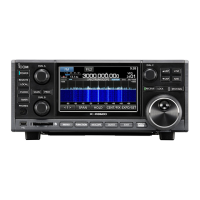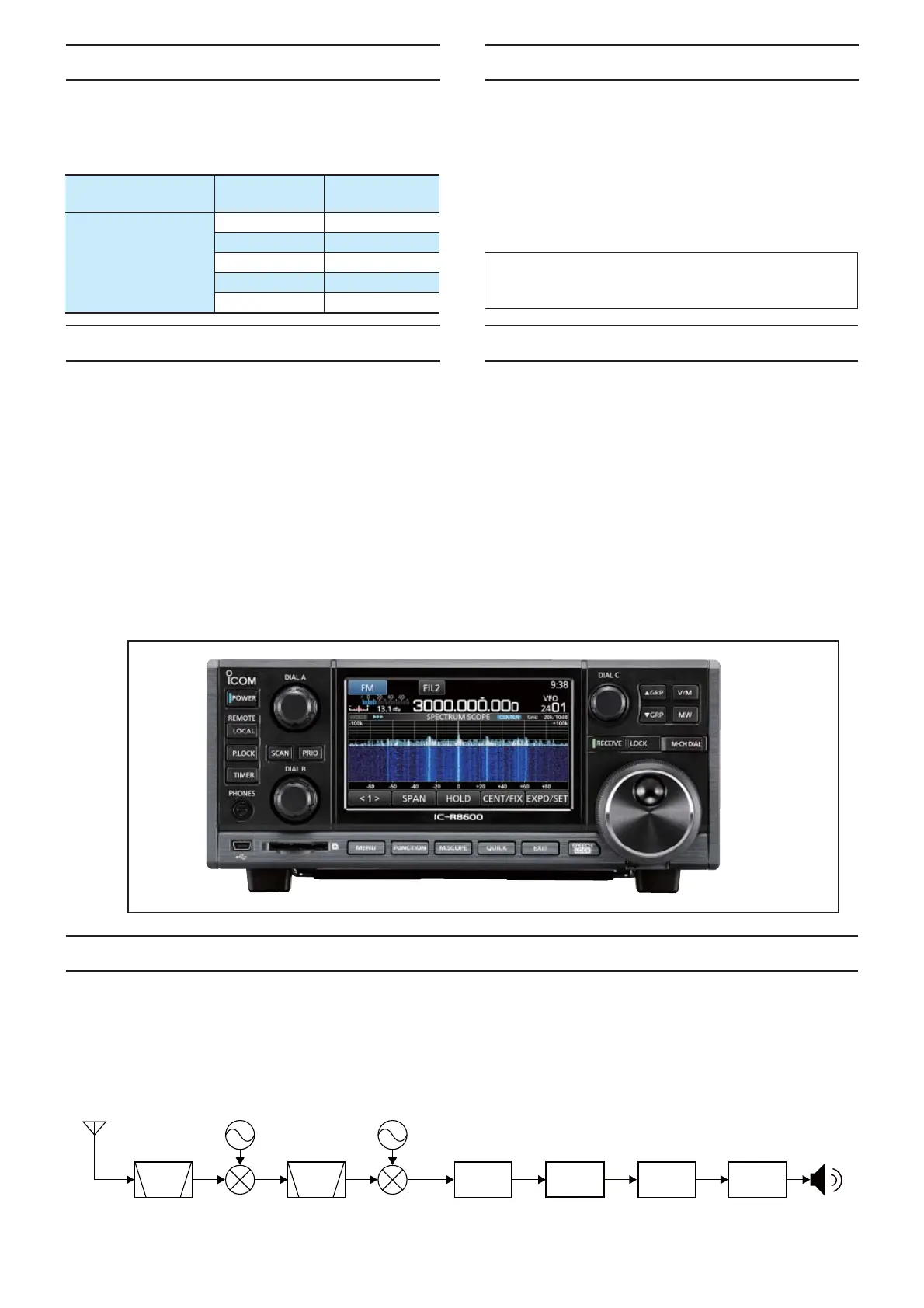Icom, Icom Inc. and the Icom logo are registered trademarks of Icom Incorporated (Japan) in Japan, the United States, the
United Kingdom, Germany, France, Spain, Russia, Australia, New Zealand, and/or other countries.
This service manual describes the latest technical informa-
tion for the IC-R8600 COMMUNICATIONS RECEIVER at the
time of publication.
To upgrade quality, any electrical or mechanical parts and internal
circuits are subject to change without notice or obligation.
Be sure to include the following four points when ordering
replacement parts:
1. 10-digit Icom part number
2. Component name
3. Equipment model name and unit name
4. Quantity required
<SAMPLE ORDER>
1110003491 S.IC TA31136FNG IC-R8600 MAIN UNIT 5 pieces
8820001210 Screw 2438 screw IC-R8600 Top cover 10 pieces
Addresses for the Icom head offi ce and major authorized dis-
tributorsare provided on the inside back cover for your con-
venience.
ORDERING PARTS
ABOUT THE SDR WIDEBAND RECEIVER CIRCUITS
1. Be sure that the problem is internal before disassembling
the receiver.
2. DO NOT open the receiver until you have disconnected it
from its power source.
3. DO NOT short any circuits or electronic parts.
4. DO NOT keep power ON for a long time when the receiver
is defective.
5. READ the instructions of the test equipment thoroughly
before connecting them to the receiver.
REPAIR NOTES
INTRODUCTION
MODEL VERSION
VERSION
NUMBER
IC-R8600
USA #02
EUR #03
USA-01 #04
EXP #05
FRA #06
NEVER connect the receiver to an AC outlet or to a DC power
supply that uses more than the specifi ed voltage. This will
ruin the receiver.
DO NOT expose the receiver to rain, snow or liquids.
DO NOT reverse the polarity of the power cable when con-
necting the receiver.
While ordinary wide band receivers need to have dedicated demodulator circuits for each receive mode, the IC-R8600 utilizes
advanced digital processes that demodulate the incoming signals.
The IF signal is sent to the A/D converter, resulting in digital signal, then is processed by a high-speed FPGA and DSP and then
restored to an analog audio signal.
The received signal is processed to be demodulated according to the receive mode, including not only conventional analog
communications in CW, AM, SSB, FM, WFM, and FSK, but also advanced digital communications in D-STAR, P25, NXDN,
dPMR and DCR. This was archived by using Software Defi ned Radio (SDR) technology
CAUTION
FPGA
BPF BPF
A/D DSP D/A
1st LO 2nd LO
IF
Demodulator

